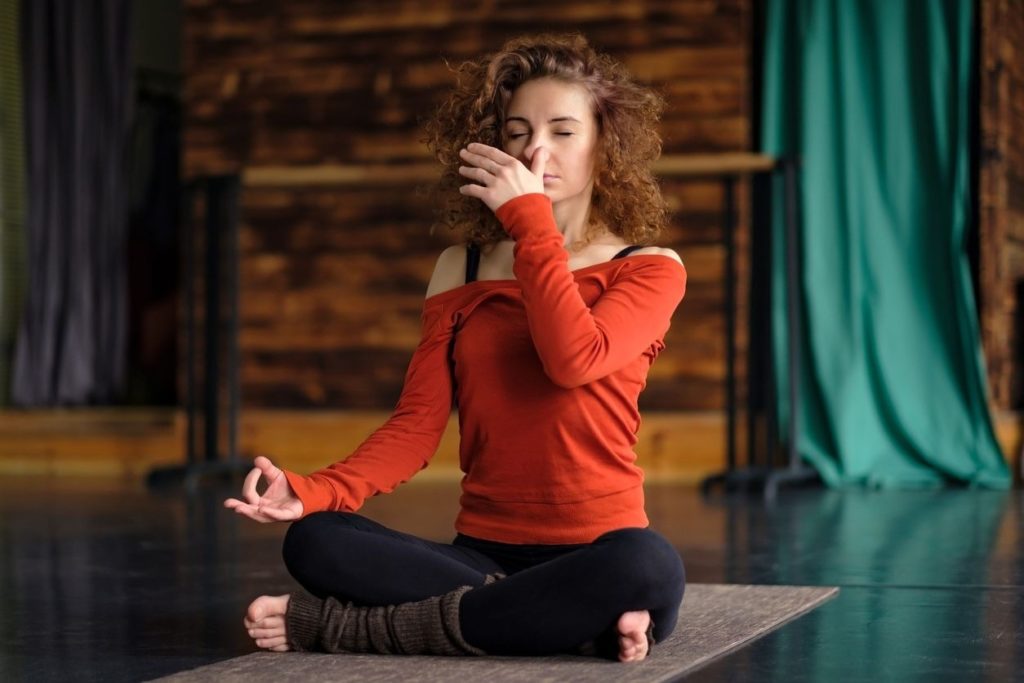Full yogic breathing on 3 levels: benefits and dangers?
Caution : You must consult your doctor for your health. This page presents only a personal and alternative point of view which should not be considered as an attempt to prescribe medicine.
Per day, each human being takes approximately 23,000 breaths.
These breaths are almost all unconscious due to our activities and concerns.
But in reality, breathing is not easy.
In yoga practice, breathing can be much more interesting.

Yogic breathing in three stages: What is it?
Three-step yogic breathing is a breathing technique taught to yoga novices.
The three parts of this breathing are: the abdomen, the diaphragm and the chest (and the collarbones).
As you breathe, you should fill your lungs with air as if breathing were taking place in the belly, rib cage, and upper level of the chest.
Then you must fully exhale the inhaled air.
This practice is also called "full breathing" or "Dirga Pranayama".
Some benefits of Dirga Pranayama (yogic breathing)
The three stages of Dirga Pranayama teach you the complete breath.
Indeed, nowadays, many people practice inefficient breathing.
This situation is aggravated by the adoption of bad posture and the long sitting times we spend every day.
This inefficient breathing is often synonymous with shallow breathing.
When you do shallow breathing, very little air enters the lower part of your chest.
It penetrates only in its upper part causing oxygen deficiency in the blood vessels, but above all atrophy of the lungs and the slightly stretched diaphragm.
This can very quickly put pressure on your lungs and diaphragm.
The practice of yogic breathing will promote a pleasant stretch and a considerable supply of oxygen to your chest and therefore will reduce your stress and anxiety levels.
Following the three stages of yogic breathing allows you to become aware of the present moment and relax your mind.
According to some research, it is possible to inhale and exhale seven times more air during a three-part yogic breath than in conventional breathing (shallow breathing).
For those new to yoga, three-step breathing allows you to settle in and lead you into meditation.
Also, it is beneficial to you in your daily life, because it does not require any particular position to relax your mind.
Some dangers of full yogic breathing in three stages
Three-step yogic breathing is a practice to be approached with caution when suffering from respiratory illnesses.
For the first time, you will need to do this in the presence of a qualified and knowledgeable teacher.
If during the exercise you feel weak or dizzy, it is advisable to stop immediately because you are not practicing it well and especially you are hyperventilating.
Know your own limits.
If you are undergoing treatment, you should first speak with your doctor before any yoga practice.
Some instructions for practicing full breathing
Here are some instructions for successful three-step breathing.
- Get into the position that's right for you by keeping your spine straight and relaxing your abdomen.
- Close your eyes, relax your body and face, then breathe in through your nose.
- Place your left hand on your lower abdomen and your right hand on your rib cage.
- Concentrate on each of your breaths in and out,
- When inhaling, be aware of your belly and the overflow of your ribs,
- As you exhale, be aware of the lowering of your belly and the contraction of your ribs,
- Using your left hand, gently expel air from your abdomen while exhaling.
Be aware of the movement in three parts (stomach, rib cage then shoulders).
With each inhale, observe the rise of your belly, the expansion of your ribs and the rise of your collarbones.
With each exhale, observe the lowering of your stomach, the contraction of your ribs and the lowering of your shoulders.
Do not stop especially, continue at your own pace while breathing very slowly.
Also remember to relax your arms and fix your mind on your three-step breath.
Also, take care to inhale and exhale deeply.
Exercise for at least 5 minutes.
What to remember?
The practice of breathing on 3 levels is a simple action with many benefits.
It soothes you during times of stress and anxiety, invigorates and rejuvenates your body and mind.
Most importantly, remember to keep it simple and slow, you will soon see the positive effects in all areas of your life.
NOTE: the most important thing will be to avoid hyperventilation and only chest breathing if the diaphragm is blocked.
❤ The ultimate guide to breathing
Intermittent Breathing : Discover the method to quickly relieve your anxiety and chronic fatigue (positive effects from the first use).Read also :
Previous article : Wheezing: what solutions?
Next article : Yoga pranayama: like doing the alternating breathing exercise?

